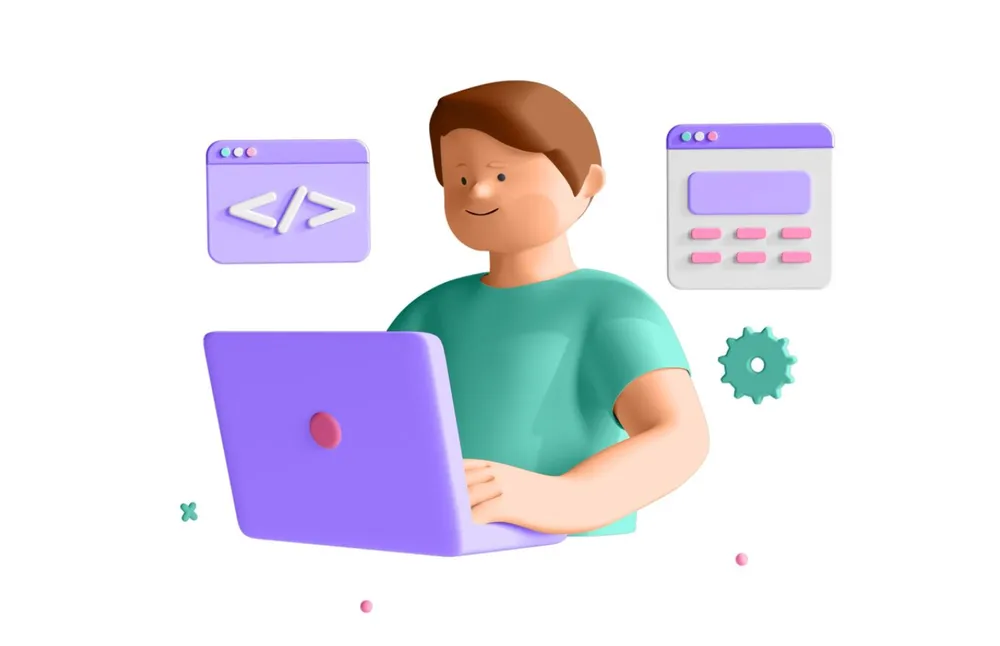What is Python?
Python is a programming language that people sweepingly use in various fields, including data analysis, machine learning, and artificial intelligence. It is known for being beginner-friendly and has a wide range of applications, including scripting and automating tasks. Python is often used to integrate different systems and can help programmers work more efficiently.
Python has become a popular choice for developers due to its many useful features, including its effective typing system, built-in data structures, and extensive library of powerful frameworks. Python’s syntax, which focuses on readability, makes it simple for a programmer to code with fewer lines and errors. Moreover, it has a sizable and active user base, so many resources are accessible to individuals who are learning the language or need assistance with a particular project. Several versions or “variants” of Python are available, each optimized for different use cases and applications. These include CPython, JPython, IronPython, Brython, RubyPython, PyPy, and MicroPython.
What is SQL?
Structured Query Language, or SQL, is a computer language that allows developers to manage and retrieve information from databases and create their own. Many industries store data in relational databases, which organize and link data using tables, columns, and rows. SQL is the most commonly used language for creating and maintaining these databases. It can generate quick insights, analyze data, and retrieve records from large databases. But what does a database imply? A database is a structured record of data created for easy access, storage, and retrieval of both old and new data and access to them in various ways. They provide a foundation for websites, applications, and enterprise software packages. Many popular database management systems, such as MySQL, Oracle, and Microsoft SQL Server, use SQL as their primary language for interacting with databases.
The Key Differences between Python and SQL
- IT companies commonly use Python for creating various types of applications. In contrast, companies use SQL for managing and retrieving data from databases.
- Python and SQL have very different syntaxes. Python is an object-oriented language with a syntax familiar to programmers from other languages like C++ or Java. SQL has a more declarative syntax, which means you specify what you want to do rather than how to do it.
- Python can create a range of sophisticated computer programs and applications, including consumer applications, corporate tools, and industrial automation systems. SQL is used mainly for creating and managing databases that store and retrieve electronic data.
- Python and SQL have functions but serve different purposes. Python functions are blocks of code that can be called multiple times, with or without parameters. SQL functions are pre-defined operations that can be used to manipulate data in the database.
- The popularity of Python has been increasing in recent years as many companies are transitioning from older programming languages to Python. On the other hand, SQL is a widely used tool for managing data in business and is essential for the growth of internet-based companies.
Which language should you use first: Python or SQL?
Python is a general-purpose programming language, while SQL is a specialized language for working with databases. In general, it’s a good idea to learn both languages, as they are both very useful and are frequently used together. Python is a great language for prototyping and building out the logic of a program, while SQL is great for storing and querying data. SQL allows you to connect (or merge) multiple data sets as a developer. Python is particularly akin to structured (tabular) data that can be obtained using SQL but requires additional manipulation. Deciding which language to learn first depends on your goals and interests. Mastering both languages might just be a feather in your cap.
Which language is more popular: Python or SQL?
SQL is a programming language used to manage and manipulate databases by performing basic functions such as creating, reading, updating, and deleting data. Many businesses use SQL to extract valuable insights from large amounts of data. MySQL is a specific type of SQL database that consists of related tables. It is pronounced “My Sequel” and is the default configuration for WordPress installations. MySQL allows for up to 64 indexes per table, each of which can have between 1 and 16 columns and has a maximum index size of 1000 bytes. The above graph displays that SQL experienced success in 2013 but has since experienced fluctuations, with a gradual decrease starting in 2019. Its popularity, compared to Python, has been declining over time.
Python is the world’s fastest-growing and most-liked programming language. It is evident from the graph that Python’s popularity has surged explicitly among developers over recent years. From 2013 to 2015, Python’s popularity and usage among developers were close to nil, with only 20-23% to its credit. However, there is an exponential increase in its use of nearly 30% until 2023. Thus, the graph shows that Python’s rise as a prominent language compared to SQL is accelerating day by day. It also proves that it is the most widely used and known programming language in the business world right now.
Conclusion
SQL is an open-source relational database management system that anyone can download and use, from a beginner to a highly experienced data scientist conducting research.
Python is a computing language for web development, data analysis, prototyping, and other technical tasks. It is known for its high-level data structures and dynamic typing, which can streamline development. On top of that, it is often used with cutting-edge technology and can reduce the maintenance cost of programs.
Python for Mobile App Development










